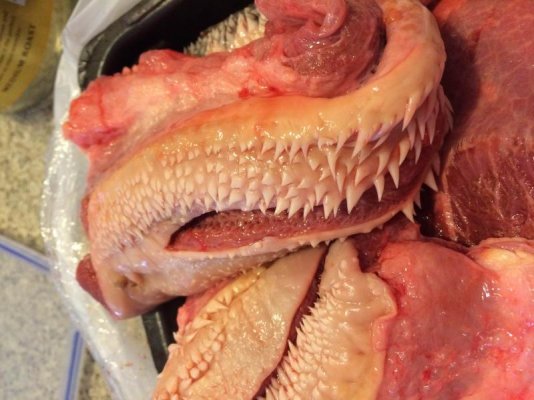Hi guys,
Completely new here and first time posting, just wanted to get some input from anyone that can help. Purchased some beef cheeks recently from local wholesale butcher (love eating at restaurants but have never cooked before). Some of these cheeks had a white spiky looking sheet on them, the spikes were soft but just very weird looking, and I've never seen them on a cooked piece of cheek before. I've attached a picture so you guys can see. Is this normal? Can I eat it or does it need to be removed?
Thanks for all your help!
Michael
Completely new here and first time posting, just wanted to get some input from anyone that can help. Purchased some beef cheeks recently from local wholesale butcher (love eating at restaurants but have never cooked before). Some of these cheeks had a white spiky looking sheet on them, the spikes were soft but just very weird looking, and I've never seen them on a cooked piece of cheek before. I've attached a picture so you guys can see. Is this normal? Can I eat it or does it need to be removed?
Thanks for all your help!
Michael
Attachments
Last edited:



